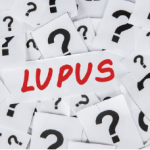Multivariable models revealed that women had a three to five times greater risk of systemic autoimmune disease than men. This result was consistent and significant in all models for both responders and community members.
Autoimmune disorders result from interactions between the environment, genetics and the immune system. Inhalation of dust containing crystalline silica, solvents, diesel exhaust, particulate air pollution and cigarette smoke have been hypothesized to induce systemic autoimmune diseases via inflammatory pathways, dysregulation of the immune response and increased peptide citrullination. Environmental risk factors have been associated with many epigenetic DNA methylation changes. Evidence from animal studies and other experimental research suggests that reduced methylation is present in immune cell types in people with SLE and in those with other autoimmune disease, including reduced methylation of the X chromosome, resulting in overexpression of genes specifically among women and increased susceptibility to these diseases. Differences in methylation patterns have also been associated with disease severity among people with SLE
Conclusion
Intense dust cloud exposure among responders and PTSD among community members were associated with a statistically significant increased risk of new-onset systemic autoimmune disease. Given that systemic autoimmune diseases are difficult to diagnose, it is not surprising that a pattern of increased risk by level of 9/11 exposure has emerged only in recent years. Clinicians treating 9/11 survivors should be aware of the potential increased risk of systemic autoimmune disease in this population.
This also demonstrates the need to monitor the health of populations affected by a disaster over the long term.
Refer to the full study for all source material.
Excerpted and adapted from:
Miller-Archie SA, Izmirly PM, Berman JR, et al. Systemic autoimmune disease among adults exposed to the September 11, 2001, terrorist attack. Arthritis Rheumatol. 2020 May;72(5):849–859.


